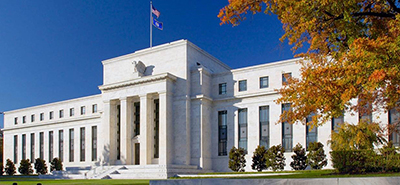
FOMC Cuts Interest Rates; MBA Economist Weighs In

The Federal Reserve’s Federal Open Market Committee cut interest rates by 25 basis points Wednesday in its third consecutive reduction. The market had anticipated the change.
“While the cut was expected, and the statement was little changed, FOMC members’ projections regarding the future path for the federal funds rate moved up in the near term, and for their expectations for the longer-term neutral rate,” MBA Senior Vice President and Chief Economist Mike Fratantoni said. “The median member now expects that there will only be 2 cuts in 2025 and that the federal funds target will be 3% in the long run. MBA forecasts that the federal funds rate will only drop to 3.75% this cycle.”
Fratantoni noted the projections also showed somewhat faster growth and somewhat higher inflation in the near term relative to the projections in September.
“While the unemployment rate has increased over the past year, and inflation has trended down, in recent months, inflation has plateaued,” Fratantoni said. “It was not surprising to see a dissent at this meeting, with one member voting to keep rates steady.”
“Expectations that the Fed will cut rates less than had been anticipated have been priced into the market in the form of higher 10-year Treasury and higher mortgage rates in recent weeks,” Fratantoni said. “MBA’s forecast for mortgage rates moved up after the election, anticipating this change and recognizing the market’s reaction to the likely path for fiscal policy and the deficit. MBA is forecasting that mortgage rates will average close to 6.5% over the next few years, with significant volatility around that average.”
The Federal Reserve Board’s full statement:
Recent indicators suggest that economic activity has continued to expand at a solid pace. Since earlier in the year, labor market conditions have generally eased, and the unemployment rate has moved up but remains low. Inflation has made progress toward the Committee’s 2 percent objective but remains somewhat elevated.
The Committee seeks to achieve maximum employment and inflation at the rate of 2 percent over the longer run. The Committee judges that the risks to achieving its employment and inflation goals are roughly in balance. The economic outlook is uncertain, and the Committee is attentive to the risks to both sides of its dual mandate.
In support of its goals, the Committee decided to lower the target range for the federal funds rate by 1/4 percentage point to 4-1/4 to 4-1/2 percent. In considering the extent and timing of additional adjustments to the target range for the federal funds rate, the Committee will carefully assess incoming data, the evolving outlook, and the balance of risks. The Committee will continue reducing its holdings of Treasury securities and agency debt and agency mortgage‑backed securities. The Committee is strongly committed to supporting maximum employment and returning inflation to its 2 percent objective.
In assessing the appropriate stance of monetary policy, the Committee will continue to monitor the implications of incoming information for the economic outlook. The Committee would be prepared to adjust the stance of monetary policy as appropriate if risks emerge that could impede the attainment of the Committee’s goals. The Committee’s assessments will take into account a wide range of information, including readings on labor market conditions, inflation pressures and inflation expectations, and financial and international developments.
Voting for the monetary policy action were Jerome H. Powell, Chair; John C. Williams, Vice Chair; Thomas I. Barkin; Michael S. Barr; Raphael W. Bostic; Michelle W. Bowman; Lisa D. Cook; Mary C. Daly; Philip N. Jefferson; Adriana D. Kugler; and Christopher J. Waller. Voting against the action was Beth M. Hammack, who preferred to maintain the target range for the federal funds rate at 4-1/2 to 4-3/4 percent.
